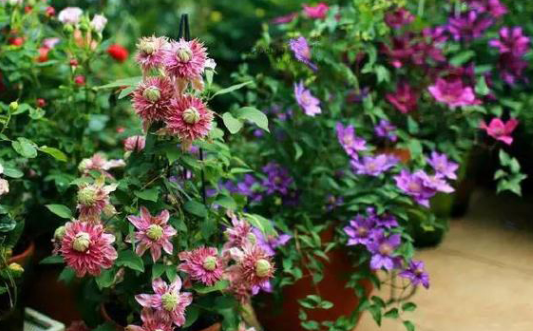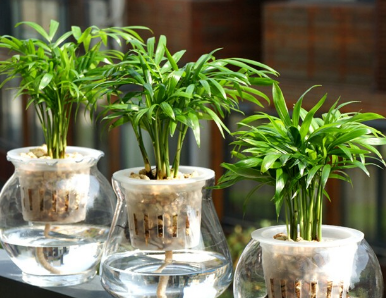How to breed cyclamen
Cyclamen, also known as radish and begonia, is a perennial herb of Primulaceae, which has a very high ornamental value. It is loved by many people and enjoys a very high reputation in the world. At present, there are many planting bases of cyclamen in our country, and how to breed is a more important work when planting cyclamen. The following editor brings you the breeding method of cyclamen, let's have a look!

1. Sowing and reproduction
Sowing and reproduction is a method of reproduction used by most flower farmers, but cyclamen seeds can only be adopted by artificial pollination. Cyclamen seeds are generally harvested around June every year, and their seed size is larger, and their germinating power is relatively strong, about 90%. However, in order to further improve the germination rate of cyclamen, it is best to promote germination before planting, soak in cold water for a day or so, and clean the mucus on the seed surface. Then wrap it in a wet cloth and put it at a temperature of about 25 degrees for about two days. When some seeds germinate, they can be sowed around September, and the soil should have sufficient organic matter, cover the soil and water after sowing, promote seed germination, do a good job in sowing management, and improve the germination rate.
2. Tuber propagation
Cyclamen tubers can not divide into bulbs on their own, so the rapid stem propagation of cyclamen can not be carried out like ordinary flowers. First of all, the tubers should be cut manually, and the cutting time is generally around September every year. At this time, the cyclamen tuber is in its budding time, and the tuber is evenly divided into several pieces. Make sure that each small piece has a bud eye, so that the tuber cannot sprout without the bud eye. After cutting, the incision should be smeared with appropriate amount of plant ash and disinfected to promote wound healing and prevent growth from being affected by infection. The small pieces can be air-dried and then put into the flowerpot soil to do a good job of management, about 2 weeks later can take root and seedling.
3. Tissue culture
Tissue culture mainly uses the plant growing within two years as the mother plant, and selects the young stem or stamens of the mother plant for tissue culture. Using special culture hormone to promote the growth of seedlings, the success rate of stem induction is the highest. Therefore, it is best to select the stem as the explant, and then prepare the medium. When the seedlings are successfully induced, do a good job of light transmission, and then become an independent plant. Transplant it into a flowerpot or prepared soil, do a good job of management, and create a good growth environment for it. After a period of time, it can grow leaves and blossom.
The above is a brief introduction to how cyclamen breeds. The reproduction of cyclamen should be used reasonably according to the planting quantity and area. If it is a large-scale planting base, it can be suitable for sowing and tissue culture. On the other hand, if it is planted at home, sowing and tuber propagation are better. That's all for today's introduction. This article is for reference only. I hope it can help you all.
- Prev

The reason why Clematis does not bloom and what to do? what are the maintenance methods in winter?
Clematis, known as the Fujimoto Queen in Europe, shows that it blossoms beautifully. Clematis like fertile, well-drained alkaline loam, avoid stagnant water. Summer is relatively dry, if the soil can not retain water, the plant is easy to die. The reason why Clematis does not blossom and what to do the florescence of Clematis
- Next

The benefits of hydroponic plants are easier to maintain than potted plants.
Modern society is an era of paying attention to efficiency, and everything is required to be fast, so more and more people like to cultivate hydroponic plants at home. The survival rate of hydroponic plants is high, and at the same time, many troubles caused by potted plants are solved. So what are the benefits of hydroponic plants? let's take a look.
Related
- Fuxing push coffee new agricultural production and marketing class: lack of small-scale processing plants
- Jujube rice field leisure farm deep ploughing Yilan for five years to create a space for organic food and play
- Nongyu Farm-A trial of organic papaya for brave women with advanced technology
- Four points for attention in the prevention and control of diseases and insect pests of edible fungi
- How to add nutrient solution to Edible Fungi
- Is there any good way to control edible fungus mites?
- Open Inoculation Technology of Edible Fungi
- Is there any clever way to use fertilizer for edible fungus in winter?
- What agents are used to kill the pathogens of edible fungi in the mushroom shed?
- Rapid drying of Edible Fungi

